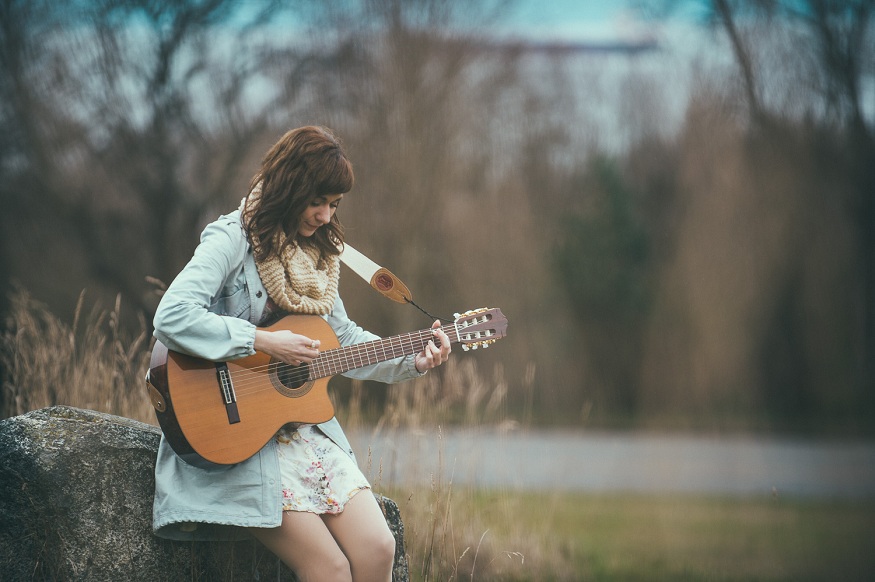In every beat, chord, and lyric, music tells a story—and through the lens of a camera, that story gains a powerful visual form. Musical photography, also referred to as music photography, is a specialized genre that blends the auditory world of sound with the visual art of photography. It’s not just about capturing a performance—it’s about freezing moments of emotion, energy, and artistry in time.
Whether it’s an electrifying shot from a live concert, a moody portrait of an emerging artist, or behind-the-scenes glimpses of rehearsal and recording sessions, music photography plays a vital role in shaping the identity and legacy of musicians, bands, and the music industry as a whole.
What Is Musical Photography?
Musical photography is the art of photographing subjects within the music industry. This includes live concerts, promotional portraits, studio sessions, music videos, and candid moments of artists on and off stage. Unlike traditional portrait or event photography, musical photography requires an ability to anticipate emotion, adapt to ever-changing lighting, and capture fleeting expressions of intensity and vulnerability.
This genre thrives at the intersection of art and performance, requiring the photographer to not only understand camera mechanics but also the rhythm, mood, and message of the music being played.
The Evolution of Music Photography
Music photography has evolved alongside musical trends. In the early days of rock ‘n’ roll, black-and-white film captured raw, gritty images of rebellious icons. The 70s and 80s brought vibrant, stylized visuals that aligned with the glam and punk aesthetics. Today, digital tools allow photographers to document performances with unprecedented clarity and creativity, using everything from drones to mirrorless cameras to edit-ready mobile devices.
The rise of social media and streaming platforms has also elevated the role of musical photography. Images are no longer just for magazines or album covers—they’re shared instantly across the globe, influencing fan engagement, artist branding, and music promotion in real time.
Why Musical Photography Matters
In a visually driven world, an image can define an era or a career. A single photograph can become iconic—think of the blurred silhouette of a guitarist mid-solo, or the emotional still of a singer mid-note with tears in their eyes. These images carry weight because they connect us emotionally to music, even when we can’t hear the sound.
Here are some ways music photography adds value:
- Tells a Story: Photographs capture the atmosphere, emotion, and narrative of a performance or project.
- Builds a Brand: Artists use photography to define their visual identity and connect with fans.
- Boosts Marketing: Compelling images drive engagement on websites, social media, and promotional materials.
- Preserves Legacy: Great music photography becomes historical documentation of careers, trends, and cultural moments.
The Challenges and Skills Behind the Lens
Being a music photographer is not as simple as clicking the shutter at a concert. Musical photography requires a unique skill set, including:
- Low-Light Mastery: Concerts often feature challenging lighting conditions—strobe lights, backlighting, and quick transitions.
- Timing and Anticipation: Musicians move unpredictably. Capturing the peak moment of a jump, scream, or emotional verse requires sharp instincts.
- Discretion: Many music shoots happen in intimate spaces like recording studios or backstage areas. A good photographer blends in and respects the artist’s space.
- Post-Production: Editing plays a key role in enhancing the mood, colors, and clarity of a photograph.
Photographers often develop a signature style—whether it’s high-contrast black and white, saturated stage lights, or gritty documentary-style captures—that aligns with specific genres like rock, jazz, EDM, or hip-hop.
Types of Music Photography
There are several branches within musical photography, including:
- Concert Photography – Capturing live performances, crowd interaction, and stage presence.
- Promotional Photography – Styled shoots for album covers, press kits, and marketing campaigns.
- Candid/Documentary Photography – Behind-the-scenes moments, tours, and recording sessions.
- Editorial Photography – Features for magazines, interviews, or music blogs.
- Music Video Stills – On-set photography during video shoots to use for thumbnails, posters, or press releases.
Each style serves a different purpose and audience, but all fall under the broader category of music photography.
How to Get Started in Musical Photography
If you’re a photographer looking to break into the world of music photography, here are a few steps to consider:
- Start Local: Photograph local shows, open mic nights, or indie bands. Build a portfolio with a range of styles.
- Get Credentials: Apply for press passes to shoot at larger venues and events. This often requires working with publications or blogs.
- Network with Artists: Collaborate with musicians on promotional shoots, portraits, or tour documentation.
- Develop Your Style: Study established photographers but find your own voice. Consistency helps artists and brands recognize your work.
- Invest in Equipment: A fast lens, solid camera body, and good editing software are essential in low-light, high-action environments.
The Future of Music Photography
With the growing importance of visuals in music promotion and storytelling, musical photography continues to expand. Virtual concerts, augmented reality experiences, and social platforms like TikTok and Instagram are opening new avenues for creative expression and visual branding.
Music photographers who adapt to new technologies while staying rooted in storytelling will continue to play a pivotal role in shaping how we see—and remember—music.
Whether you’re a fan, an artist, or a visual storyteller, music photography offers a dynamic and emotionally rich form of artistic expression. A great musical photography collection doesn’t just document events—it immortalizes energy, vulnerability, and identity in every frame.
So the next time you hear your favorite song or attend a live performance, think about the images that come to mind. Behind each of them is a photographer capturing not just what you saw, but what you felt.

